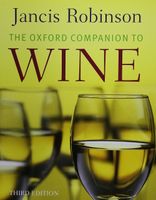Traditional method: Pressing and yield
Published 2006
Pressing is the first operation defined in detail by the traditional method, which understandably differentiates rigorously between the fractions of juice from each press load, for the first juice to emerge from the press is highest in sugar and acidity and lowest in phenolics, including pigments. A maximum extraction rate is usually defined in any regulations concerning sparkling wine production (such as those for France’s crémants). Those who produce traditional method sparkling wine acknowledge that the first juice to emerge from the press is generally the best, even if there is a certain amount of vintage variation. From 1992, the permitted extraction rate for champagne was reduced so that 160 kg (350 lb) of grapes rather than 150 kg of grapes were required to produce 102 l (27 gal) of wine, about the same extraction rate as that used by producers of top-quality sparkling wine anywhere in the world. (This compares with an approximate average extraction rate of 100 l of wine from about 130 kg of grapes for still red wines; see yield.)
Become a Premium Member to access this page
Unlimited, ad-free access to hundreds of the world’s best cookbooks
Over 160,000 recipes with thousands more added every month
Recommended by leading chefs and food writers
Powerful search filters to match your tastes
Create collections and add reviews or private notes to any recipe
Swipe to browse each cookbook from cover-to-cover
Manage your subscription via the My Membership page
Part of
Advertisement
Related Recipes
-
-
-
-
Related Reference
-
-
-
-
Advertisement



